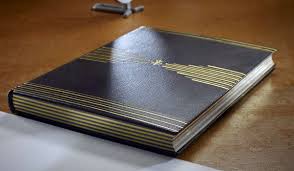Preserving documents, photographs, and books for future generations requires careful attention to the materials used in storage. Among the most important materials for long-term preservation is acid-free paper. This specialized paper prevents the deterioration that can plague ordinary paper products, ensuring that valuable and sentimental items remain intact over time. This article explores what acid-free paper is, why it matters for archival storage, and how to choose the right products for your preservation needs.
What Is Acid-Free Paper?
Acid-free paper is manufactured to have a neutral or slightly alkaline pH, typically around 7 or higher. In contrast, regular paper often contains acidic components due to the wood pulp and chemicals used in production. These acids cause paper to yellow, become brittle, and break down over time.
The acid-free process removes or neutralizes these acids during manufacturing, creating a stable and inert product that resists degradation. Many acid-free papers also contain alkaline buffers, like calcium carbonate, to help neutralize acids from the environment.
Why Acid-Free Paper Matters for Archival Storage
When storing books, photographs, letters, or artworks, acidic paper can accelerate damage. This deterioration happens because:
-
Acidic breakdown: Acids in paper catalyze the breakdown of cellulose fibers, causing pages to become yellow, fragile, and crumbly.
-
Transfer of acids: Acid migration can occur between stored items, spreading damage.
-
Environmental factors: Heat, light, and humidity can exacerbate acid-related degradation.
Using acid-free paper for storage materials—such as folders, envelopes, interleaving sheets, and photo mounts—helps protect your items by providing a neutral, safe environment.
Applications of Acid-Free Paper in Archival Storage
-
Document Storage: Legal papers, historical records, and family documents should be stored in acid-free folders and envelopes to prevent yellowing and brittleness.
-
Photograph Preservation: Acid-free photo albums and mounting corners help prevent chemical reactions that fade or discolor photographs.
-
Book Conservation: Interleaving sheets of acid-free paper placed between pages can protect fragile or printed materials from acidity and abrasion.
-
Artwork Storage: Acid-free mats and backing boards preserve drawings, prints, and watercolors by preventing acid migration from framing materials.
Choosing the Right Acid-Free Paper
Not all acid-free papers are created equal. For archival purposes, consider:
-
pH Level: Aim for paper with a pH of 7.0 or higher to ensure neutrality or alkalinity.
-
Lignin Content: Lignin, a natural component in wood pulp, can cause paper to yellow. Choose lignin-free or low-lignin papers for long-term storage.
-
Durability: Archival paper is often thicker and stronger to withstand handling.
-
Certification: Look for papers certified as acid-free and archival by standards such as ANSI/NISO Z39.48 or ISO 9706.
Additional Tips for Archival Storage
-
Store items in a cool, dry environment away from direct sunlight.
-
Use acid-free boxes and containers for additional protection.
-
Avoid using adhesives, tapes, or paperclips that are not archival quality.
-
Regularly inspect stored items for signs of deterioration and rehouse them as necessary.
Conclusion
Acid-free paper plays a vital role in archival storage by providing a safe, stable environment that prevents the rapid deterioration of precious documents, photographs, and books. By choosing high-quality acid-free materials and following proper storage practices, you can help ensure that your valued items remain preserved and accessible for future generations.






